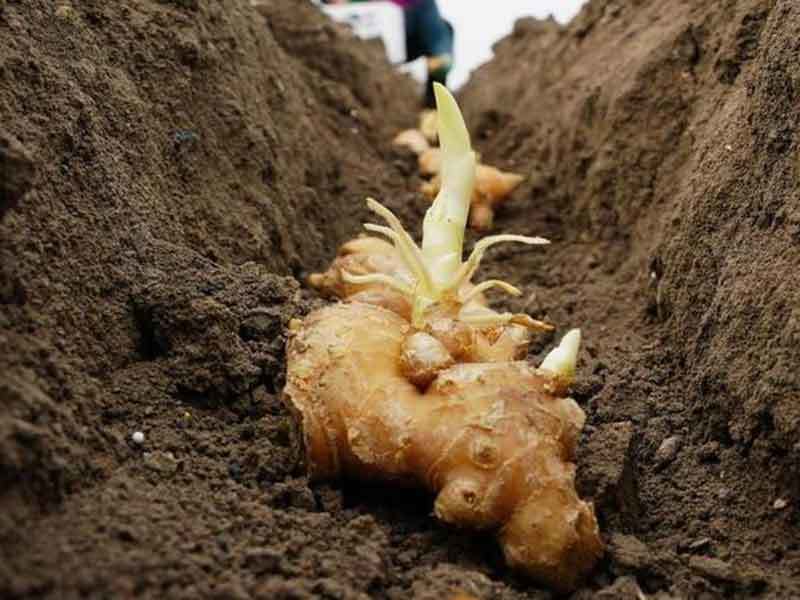The Essential Guide to Growing Ginger in Ohio
Introduction
It has culinary and medicinal uses. However, cultivating ginger in Ohio is no small feat. It requires a bit of ingenuity to create the right conditions for this tropical plant.
Climate and Soil Requirements
Ohio's Diverse Climates
Ohio possesses a varied climate. Northern regions experiencing severe winters. The southern parts enjoy a milder climate influenced by the Ohio River. Ginger requires a warm, moist environment to thrive.
Understanding the planting zone and microclimates of your specific area. Greenhouses allow for year-round cultivation if your area is tough Ohio winters.
Soil Standards for Satisfied Ginger Plants
Ginger prefers well-draining soil to prevent rhizome rot and other diseases. Ohio's soil ranges from the loamy dark earth of the central region to the sandy soils in the north. However, ginger is forgiving, and adjustments can be made.
The soil pH level between 6.1 and 6.5 is ideal. Incorporate organic materials can increase fertility and drainage. For example, compost and well-rotted manure.
The Fine Art of Soil Amendment
The process of amending soil is akin to a connoisseur blending a delicate wine. Soil should be light, with a friable texture when rubbed between fingers. Incorporate sand for better drainage. Peat moss can light the soil heaviness.
You can use ground limestone to raise pH while elemental sulfur lowers it. Amending soil requires preparation years in advance of planting the ginger rhizome.
Selecting Ginger
Types of Ginger
There are several species of edible ginger. But Zingiber officinale is the most commonly used and easiest to cultivate. You can find its knobby rhizomes at the grocery store.
Sourcing Ginger Rhizomes
The success starts with the quality of your rhizomes. Sourcing them from a reputable nursery or a trusted online supplier. Choosing plump, unblemished rhizomes with visible nodes. Shoots and roots will grow from the points.
How to Grow Ginger in Ohio?
When to Plant Ginger in Ohio?
The best time is in late winter or early spring. The plants will have a long growing season to produce a decent harvest. This timing also gives your ginger a leg up on growing indoors under the care of grow lights. It will develop a robust root system before the outdoor growing season.
Container vs. Ground Planting
Container planting offers control and mobility, especially when ginger must be brought indoors to avoid frost. Choose a pot at least 14 inches in diameter with good drainage.
Place a few shards of broken pottery over the holes. They prevent the soil from washing out while still allowing water to escape. If you choose to plant ginger directly in the ground, ensure it is well-drained. Consider building a raised bed to control the soil quality and temperature.
The Planting Process
Soaking the rhizomes overnight in water to rehydrate. Fill your containers with the prepared soil when growing ginger in Ohio. Cover the rhizomes with an inch of soil. Make sure the eye buds face up. Spacing them apart by at least 8 inches. Cover them with soil and water generously.
Eencourage sprouting with a consistent temperature of 75-85°F. Transplant your ginger outdoors after the last frost. Make sure the soil is consistently above 55°F.

Care and Maintenance
Watering
Ensure your plants receive 1-2 inches of water per week. Consistency is key. So monitor soil moisture levels regularly.
Mulching
Mulch can help retain soil moisture. This is especially beneficial during the hot Ohio summers. Apply a layer of mulch around your ginger plants. Avoid direct contact with the stems.
Fertilizing
Regular feeding with a balanced fertilizer. It will promote healthy growth. A low-nitrogen and high-potassium fertilizer can encourage rhizome development.
Pruning
Trim back any dead or yellowing leaves. This prevents disease and enhances air circulation. Be mindful of the health of the rhizomes when trimming.
Dividing
Divide your ginger when it is overcrowded. Divide after the plant has become dormant in the fall. Carefully lift the rhizomes. Use a sterile knife to divide the clumps. Ensuring each new plant has a minimum of three eyes.
Weeding
Keep the area around your ginger plants free from weeds. Weeds can compete for resources. They may also provide a hiding place for pests.
Weather Defense
Protect your ginger from late spring or early fall cold snaps with row covers. You can also relocate potted plants indoors.
Pest and Disease Management
Pest Control
Pay attention to aphids, mites and mealybugs. A strong blast of water can often knock them off the plants. For severe infestations, use insecticidal soap as a natural control method.
Disease Prevention
Ensure proper drainage and ventilation to avoid fungal diseases. For example, root rot. Avoid overhead watering which can lead to leaf diseases. Quarantine new plants to prevent the spread of any potential diseases.
Harvesting and Storing Ginger
Harvesting Ginger
Harvest occurs towards the end of the summer or early fall. This is usually after about 8-10 months of growth. The leaves will wither and turn brown. It is a sign that the ginger is ready for harvest. Dig around the base of the plant and gradually remove the rhizomes. Be careful not to damage the plant.
Storing Ginger
You can use fresh ginger rhizomes in cooking. Keep ginger in a cool and dry place. Store it in the refrigerator for several weeks. Turning it into a delicious ginger powder. Or consider making pickled ginger. Freezing ginger after peeling. Grated is also a convenient way to have it available for culinary use.
Conclusion
Can you grow ginger in Ohio? This requires some adjustments. But you can enjoy a successful harvest with proper planning and care.

